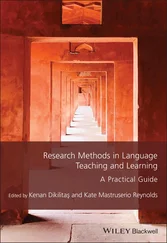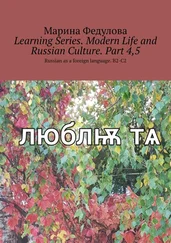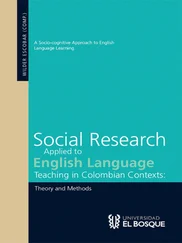There is no doubt that the imitative capabilities of children are the basis of essential social and developmental processes. However, for adults to re-enter fully into this process of imitation often requires making a step into a now unfamiliar territory. During this process behaviour is no longer governed by the conscious mind, but is dependent solely on seeing, listening and unconsciously following:
As adults we learn to withdraw and hold back how we act in the world which is a good idea if you don’t want to get into trouble. But imitation invites you just to mirror the other and not to judge or filter. You move out of the head into doing. This capacity to imitate practices seeing the world from the other’s point of view. You get to experience the world as the other experiences it and not through your intellectual understanding of the other’s experience. Clowning invites you to see the world through empathy and not through understanding. (Interview 2)
At first glance it might appear that the capacity for imitation would not be a decisive element in the context of a workshop on improvisation. However, in Gladwell’s understanding of the different possibilities and qualities inherent in imitation, it becomes evident that there are deep connections between these processes. Just as the child’s imitation is never superficial or mechanical, but a complete and unconscious ‘going with’ the other, the adult also has the possibility of trying to replicate the entire movements, emotions and breathing of someone else. It is not just about doing what the other is doing, but about being alive to the richness of the other. The continual back and forth of leading and imitating in the group demands a heightened awareness and sensitivity to the moment. The sense of presence which this requires is the most essential element in all improvisational work:
In imitation you are constantly struggling between two polarities. On the one hand you have the rule, i.e. you have to imitate and repeat what others are doing. On the other hand, you need to find your way of being alive and present in that structure. That calls for transformation, for change, for evolution. If you just copy what the other is doing and are not somehow living through the form then the games dies. (…) The stated aim of the imitation game should not blind you from seeing that there are differences and transformations; that is what brings life and presence to the game. (Interview 3)
Unsurprisingly, the exercise ( Simultaneous Leader ) works better for some participants and for some groups than for others. In the short feedback exchanges afterwards, sometimes people say that they felt that they were not being heard or seen by the others and that all they did was imitate. Another problem that can occur in this exercise is that the imitation can become mechanical and lose energy and interest:
One of the big problems you come up against with imitation is when a group goes into a rhythmical pattern. Rhythm and repetition is great as long as you remain present and alive in the structure. The problems start when you are not listening for transformation and change. With rhythm, you could easily be misled into thinking that what happened before, will be what happens after. That is what repetition is by definition. But it never is – not in this game anyway. And when you start thinking you know what will happen next, you stop listening to what is happening now. (Interview 3)
This distinction between organic imitation and mechanical imitation is something which is not only experienced by the members of the group, but is also quite visible for an observer.
6.3.2 Games of Playful Confusion
The atmosphere which is present through this entire phase of ‘games and play’ is one of lightness and humour. This can take very different forms. In its most chaotic and energized form it can involve participants running through the room trying to catch each other – very much like children. One game which invariably evokes this type of playfulness is the game of Cat and Mouse . In this game, pairs are spread out throughout the entire room, facing each with their arms outstretched and their palms touching over their heads. At the same time there is one person who is the ‘cat’ running through the room and chasing another person who is the ‘mouse’. If the cat manages to catch the mouse by touching it on its back they immediately reverse their roles -, the cat then becomes the mouse and the mouse becomes the cat. The only safe place for the mouse to hide is to run to one of the pairs standing around the room and stand between them. At this moment, the mouse immediately becomes one of the people standing, while the person whose place he has taken suddenly becomes the cat who then chases the person who was previously the cat and who is now transformed from the cat into the mouse. Exactly that last immediate transformation from ‘hunter to the hunted’ can often be a source of utter confusion.
He explains the rationale for such a form of ‘child’s play’:
This game belongs to a small range of games we use to create an atmosphere of playful confusion. It isn’t very central to our pedagogy, but I like this game because it says something about how we lose and win and about our flexibility in changing our identity. You say that there is a lot of running but it is actually more interesting to do this game in slow motion …I n slow motion it becomes about how you are going to play at being the cat and the mouse, how you are going to change from one to the other and how you play at losing, at being caught. The game is totally stress-free because by being caught, you win and become the cat. By losing you win, which is great for clowning. (Interview 3)
6.3.3 Games of Listening and Perceiving
These are games which involve a heightened awareness of listening and perceiving. They require a high level of awareness and trust in one’s partner, requiring each participant in turn, to let go and just follow the other. Despite their differences, each of these different games has strong elements of giving and receiving. In Blind Walk , half the participants close their eyes and walk wherever they want and at whatever speed they want, while being ‘navigated’ through the room by their seeing partners. Depending on the number of people in the group, the varying speeds of the different pairs and the size of the room this game can sometimes become very challenging for the ‘seeing half’ of each pair who is responsible for avoiding all types of collisions. For the ‘blind’ participant, the sensation of wandering freely throughout a room without seeing anything, wholly dependent on being led by a partner who is intently watching out that no one will get hurt, calls for and creates a deep level of trust. When done to music it is called Guardian Angel and creates the feeling of dancing freely with one’s eyes closed. The partners then change roles and afterwards there is a brief feedback exchange between them.
For the game Pivot Dance music is required. The range of music used is relatively broad, from dance music such as tangos to calmer and more lyrical music. The rule is that at the moment when your partner stops dancing, you then start dancing. The structure of the Pivot Dance invites you to do nothing while your partner is dancing except to watch her and wait until she finishes her turn. This back and forth can last any period of time, i.e. there are both short and long sequences in which one or the other is dancing. This exercise is generally one of the most popular of all the games during the workshops, and it is a very beautiful exercise to watch as one can often see how in the developing relation of the dance of one person to the dance of the other a unified whole can emerge, although all is improvised in the moment. This game can be done either simultaneously by half the group while the other half watches, or, at a more advanced level, by pairs doing this in front of the others:
Читать дальше












